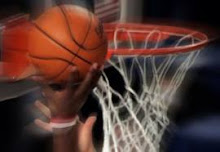Sports education is a form of physical education that emphasizes participation in sports as a way of developing skills, learning rules, practicing good sportsmanship, leading an active lifestyle, participating in a group, and learning leadership skills. Faced with cutbacks in physical education courses overthe 1980s and 1990s, physical education teachers were often reduced to teaching sports skills apart from the actual game. Many teachers see sports education as a way of revitalizing physical education and making it more useful tostudents.
Sports education offers many features not present in standard physical education. By using seasons, teaching units that are two to three times longer thanin physical education, sports education teachers have an opportunity to instruct in greater depth. Students are affiliated with a team throughout the semester, and all planning, practice, and competition is carried out in teams. Students find that sports are more meaningful in the context of the group effort and formal competition. Each season has a culminating event such as a championship, which gives students the opportunity to mark their progress. Recordkeeping is part of school sports as an effort to set standards, define goals, provide feedback, and set traditions. Teachers incorporate some sort of festivity into each season as an opportunity to celebrate effort, improvement, and fair play.
Sports education differs from institutionalized sports in many ways. Becauseof participation requirements, all students play at all times. Students are exposed to developmentally appropriate competition; adult forms of games are not used. Students learn the diverse roles inherent in sports competition, such as performer, referee, and scorekeeper. Depending on the season and the sport, they also have opportunities to serve as coach, manager, trainer, statistician, publicity officer, and sports board member. This gives students a better background to enjoy and participate in sports as adults. In addition, theteacher is relieved of some of the managerial responsibilities, enabling himor her to work more closely with students.
Sports education is set up so students can derive larger lessons in cooperation. A class may be divided into three teams, with two of the teams competingand members of the third team handling the diverse roles such as refereeing,then the teams rotate. Students benefit from peer teaching. Coaches lead skill practice, but because the students are organized in teams, they engage in peer teaching to help the team succeed. Because the season is longer than a physical education unit, teachers expect that conflicts will arise within teamsand between teams; sportsmanship rules are enforced.
There are many advantages for students with low skills. They benefit from being part of the team and develop more confidence. In the longer season, they have more time to improve. At-risk students develop better social skills as aside benefit of learning sportsmanship and fair play. The ultimate goal of sports education is for students to become competent, literate, and enthusiastic in sports
Kamis, 13 Mei 2010
Langganan:
Komentar (Atom)

